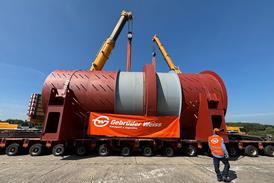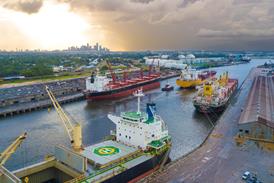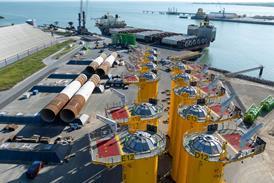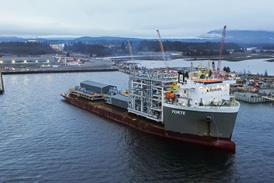Dutch heavy transport engineering specialist Mammoet used its Move3D software to facilitate the disassembly of tunnel boring machines (TBM) at the UK’s Hight Speed 2 (HS2) railway project.
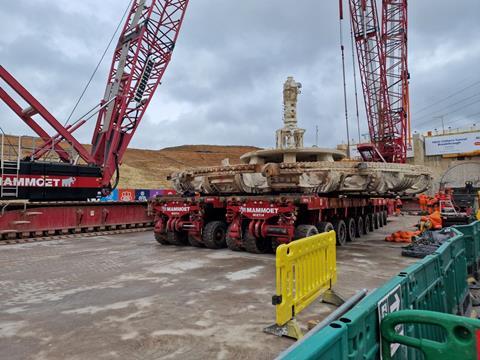
HS2 will connect the West Midlands and London with a 140 miles (225km) high-speed rail line. The underground section of the route is created using tunnel boring machines (TBMs), which can measure 170 m in length and weigh 2,000 tonnes. TBMs are made up of thousands of parts, including many very heavy components that require careful handling when the TBMs are assembled and then again dismantling after their drives are complete.
Align JV – a joint venture between infrastructure companies Bouygues Travaux Publics, VolkerFitzpatrick and Sir Robert McAlpine – is delivering the Central 1 section of HS2 Phase 1. This stage of the project includes a twin-bore 16 km tunnel through the Chiltern Hills. Having supported Align JV with the assembly of two TBMs, Mammoet was also involved in the dismantling of the TBMs at the North Portal of the Chiltern Tunnel, after their drives were completed
Assembly of the TBMs took place at the South Portal site, a large purpose built area that included two factories that manufactured the segments required to line the tunnels, and a slurry treatment plant to process the spoil excavated from the tunnels. Their dismantling of the TBMs would take place at the North Portal site, near Great Missenden.
“We determined that the equipment used to build the boring machines wasn’t necessarily the equipment needed for their dismantling,” said Simon Crawley, senior commercial manager at Mammoet. “There were different limitations at the two sites. Because there were obstructions in the way, a 600-tonne crawler crane was needed at the construction stage. We believed that a 400-tonne crawler crane would be adequate to perform the dismantling.”
To prove that a smaller crane could do the job, Mammoet created a detailed visualisation of the project using Move3D. This included a full animation of the most complex lifts. Seeing how the job would be carried, Align was satisfied with the recommendations that Mammoet put forward and was able to use a more cost-effective solution.
Two TBMs needed to be dismantled at the North Portal. The 400-tonne lift capacity crawler crane (a CC2400) was used to remove the biggest components from the TBMs. For the heaviest component, the cutter head, an LR1300SX crawler crane was also used to perform a tandem lift. The components were lowered onto SPMTs before being taken to one of two laydown areas.
Additional crawler cranes, including the LR1300SX and an LR1250 support crane, would offload the components onto the ground or supports for further dismantling. As the cutter head was too heavy for the smaller cranes to lift, climbing jacks were used to offload it from SPMTs to the ground.
A challenging aspect of the project was the fact that the cutter head’s center of gravity (COG) could not be fully known. The lifts also needed to be performed on a slight incline. This was because the TBMs exited the tunnel at an angle.
Typically, challenges such as this this would result in having to create additional drawings and manage changes before performing the lift. However, in this case, air hoists were used to make pneumatic length changes and keep the components level. “It took away that manual element of hoisting chain blocks. It was done on a compressor rather than using manual labour, which was safer and more efficient,” Mammoet project manager, Rhys Burley, explained.

